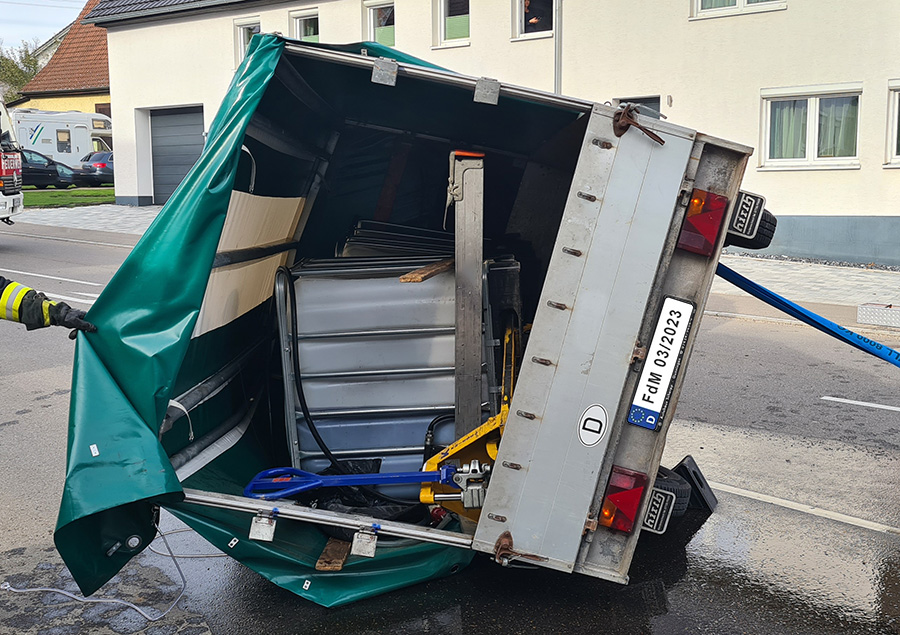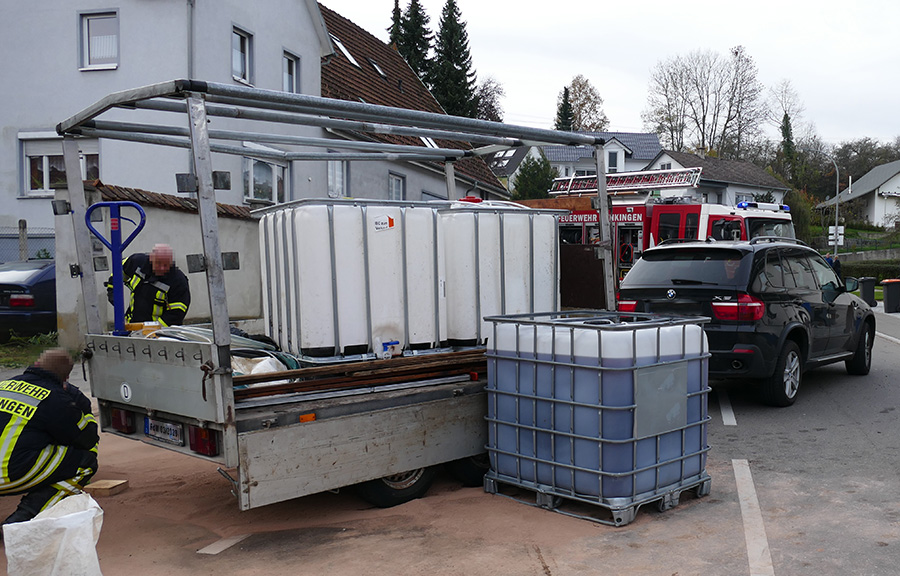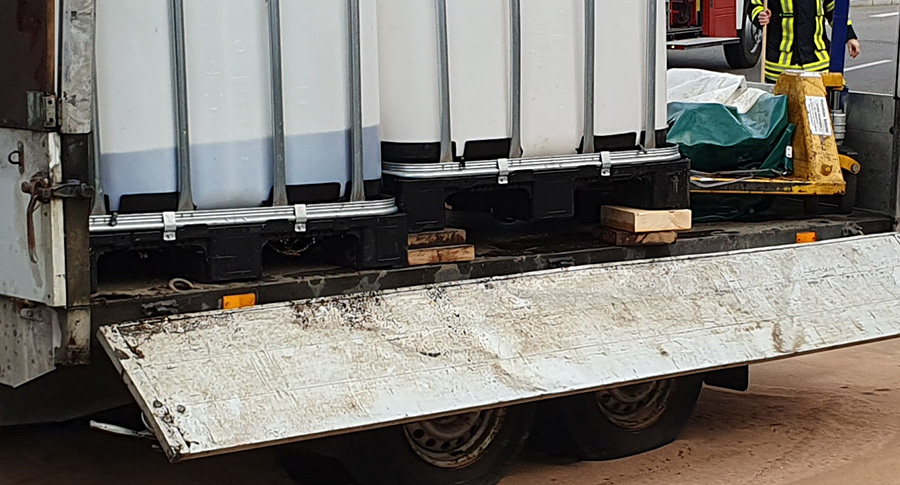| Photo of the month – March 2023 |
[German version] |
Overflowing with excitement
It would appear that this load of heating oil quite literally overflowed with excitement.
Unable to contain itself at the excitement of rounding a bend, the heating oil simply made a bid for freedom.

Figure 1 [Max Reich, Konstanz Police]
So what happened?
A private individual had divided 1000 liters of heating oil between two intermediate bulk containers (IBCs), although we have no idea why. Perhaps it allowed the weight to be better distributed on the car trailer. The two IBCs were loaded as a tight fit to the front and “secured” to the rear using a retaining board. The load was not secured to the sides.
When the vehicle turned, the IBCs slipped to the side. When they reached the side gate of the trailer, their kinetic energy was sufficient to break open the gate. And the surging motion of the liquid played its part in exacerbating the slipping movement. If you want a practical demonstration of how relatively free-moving fluids behave, just take a baking tray with high edges and fill it with about a centimeter of water. Then tip it slightly to one side. You may wish to do this experiment over the bath or somewhere where you can wipe the floor dry easily.
This “free surface effect” is something that strikes fear into those who transport fluids. It is therefore recommended that tanks such as these should be filled up to 95 % full or even more, to avoid surging effects being converted to kinetic energy.

Figure 2 [Max Reich, Konstanz Police]
- We really don’t have to point out that “do it yourself” transportation of hazardous goods such as this is not permitted.
- As we have said, if fluids are to be transported in IBCs, it makes sense to fill them at least 95 % full.
- If the trailer is suitable to carry this weight and the towing vehicle is also appropriate, we can turn our attention to how the load is secured.
- Let’s start with load distribution: Unless the manufacturer of the two-axle trailer has stipulated something different, we would place the center of gravity exactly in the middle, both laterally and longitudinally.
- Anti-slip mats would be placed under the IBCs and two or three pallets lying flat, an empty IBC or some other, resilient filling material would be placed in front of the IBCs.

Figure 3 [Max Reich, Konstanz Police] - The minimum level of securing would be provided by four lashing belts attached at all four corners as direct lashings.
- If the frame of the IBC is not strong enough to do this, it would be possible to lash down the IBC with tie-down lashings passed over a pallet on top of the IBC.
- The gaps to the sides could also be filled, or loop lashings could be attached. The load-securing points on the trailer appear to be very strong.
- The consequences were dramatic: It was necessary to bind something between 100 and 200 liters of heating oil that had spilled onto the road. Some of the oil escaped into the sewer, which meant that, on the following day, 9 tonnes of sewer sediment had to be pumped out.
- Fortunately, it was not raining and none of the oil made its way into the soil. Undoubtedly, the driver just thought he would quickly transport some oil. And it would undoubtedly never have crossed his mind that he could be setting a whole chain of unpleasant consequences in motion.
In hot summers, it is not uncommon for plastic tanks to be loaded onto all kinds of vehicles and filled with water in order to water trees and flower beds. Unfortunately, these tanks are often very poorly secured or, indeed, not at all. Perhaps this Photo of the Month will give some people pause for thought. Who knows.
Your load securing columnists wish you a safe and secure spring.
Back to beginning
